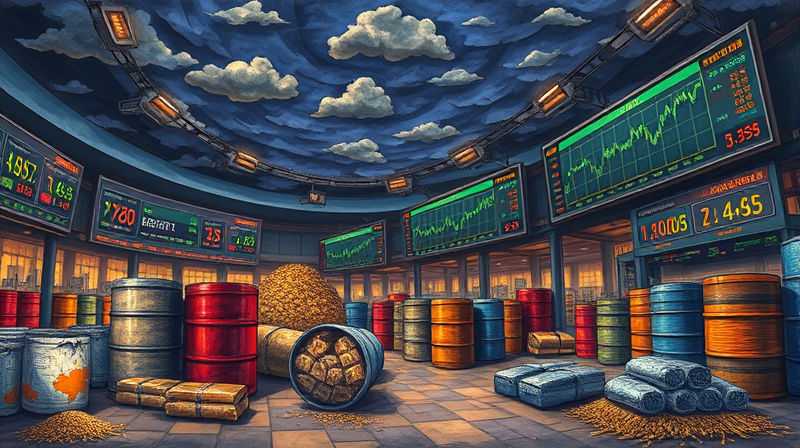
As mortgage rates climb toward levels unseen in over a decade, homebuyers face rising monthly payments and real estate investors confront sharply lower valuations. By mid-2025, the average 30-year fixed mortgage rate hovers around 7%, more than 50 basis points above September 2024. This dramatic shift is reshaping housing affordability, squeezing inventory, and sending shockwaves through real estate stocks and REITs.
In this article, we explore the causes and consequences of this rate surge, examine its impact on homeowners and builders, outline strategies for navigating the market, and offer practical guidance for prospective buyers and investors.
Just a few years ago, sub-3% mortgage rates made homeownership within reach for many Americans. Pandemic-era policies and ultra-accommodative monetary measures drove 30-year rates to record lows, fueling a housing boom. Fast forward to June 2025, and those same rates approach 7%, driven by persistent inflation, robust job growth, and central bank caution.
This rebound of over 50 basis points since September 2024 marks one of the fastest rate ascents in recent history. Most forecasts predict rates above 6% through 2025, with the possibility of easing to around 5.6% by 2026—still far above the financial party of 2020–21.
Rising borrowing costs erode the present value of future cash flows, a critical metric for real estate companies and REITs. Equity valuations in the sector have dipped as investors rotate into higher-yielding fixed income instruments. In mid-2025, real estate stocks underperformed broader market indices by several percentage points.
Deep uncertainty about rate direction and housing demand has dampened investor confidence. Many institutional players, including J.P. Morgan and Berkshire Hathaway HomeServices, advise caution, expecting real estate to remain a drag on portfolios until rates stabilize.
Meanwhile, would-be homeowners increasingly choose renting over buying, further pressuring demand and altering the traditional supply-demand balance.
A striking 82% of outstanding mortgages carry rates below 6%, creating a pronounced “lock-in effect” preventing sales. Homeowners reluctant to give up their low-rate loans have stayed put, reducing available inventory. From 2022 to 2024, an estimated 1.72 million potential home sales were deferred by this phenomenon.
With existing home sales projected at just 4.25 million in 2025—20% below 2019’s pre-pandemic level—prospective buyers face a twofold challenge: fewer homes for sale and sharply higher monthly costs. An illustrative difference: on a $350,000 mortgage, moving from 3% to 7% interest inflates monthly payments by over $800.
In response to slowing sales, homebuilders ramp up incentives and adjust inventory. Many firms now offer mortgage rate buydowns, covering part of a buyer’s interest to simulate a lower rate. Others turn land into “spec homes”—quick move-in properties aimed at capturing buyers hesitant to wait.
These tactics have led to the highest new-home inventory since 2007, with 481,000 units available. Yet unsold stock remains concerning: spec homes alone total 385,000, a near-record high. Builders now walk a fine line between stimulating sales and managing carrying costs.
Buyers navigating today’s market must adapt. While rising rates pose challenges, they also present opportunities for those armed with knowledge and flexibility.
Patience can pay dividends. If you’re not in a hurry, monitor rate forecasts: many analysts expect modest declines toward 6.3% by year-end 2025 and further easing in 2026.
High rates and housing headwinds will likely act as a brake on economic growth in 2025. Consumer spending tied to home purchases and related sectors—appliances, furnishings, renovations—may soften. Nevertheless, the job market remains solid, and inflation is trending downward.
Election year dynamics add another layer of uncertainty. Fiscal policy shifts or central bank guidance could sway market expectations, perpetuating volatility in mortgage rates and stock performance.
Fannie Mae, Morningstar, and the FHFA predict rates averaging above 6% through the end of 2025, with only gradual relief arriving by 2026. Home price growth is expected to slow to 3% or below, reflecting weaker demand.
For real estate investors, these conditions suggest a cautious stance. Portfolios may need to tilt toward sectors less sensitive to interest rates or focus on shorter-duration debt. Homebuyers should prepare for higher costs but can capitalize on builder incentives and diversified financing options.
Though 2025 presents formidable headwinds, understanding the underlying forces—policy, inflation, supply dynamics—empowers decision-makers. By staying informed, leveraging creative financing, and maintaining flexibility, both buyers and investors can navigate the current storm and position themselves for the eventual market recovery.
References













